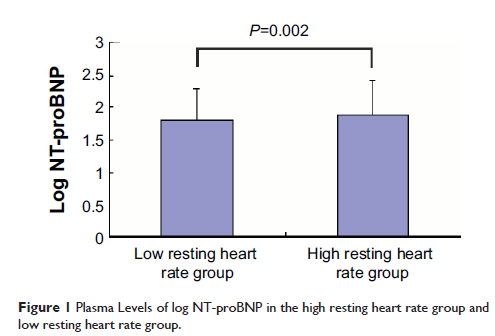108384
论文已发表
注册即可获取德孚的最新动态
IF 收录期刊
- 3.4 Breast Cancer (Dove Med Press)
- 3.2 Clin Epidemiol
- 2.6 Cancer Manag Res
- 2.9 Infect Drug Resist
- 3.7 Clin Interv Aging
- 5.1 Drug Des Dev Ther
- 3.1 Int J Chronic Obstr
- 6.6 Int J Nanomed
- 2.6 Int J Women's Health
- 2.9 Neuropsych Dis Treat
- 2.8 OncoTargets Ther
- 2.0 Patient Prefer Adher
- 2.2 Ther Clin Risk Manag
- 2.5 J Pain Res
- 3.0 Diabet Metab Synd Ob
- 3.2 Psychol Res Behav Ma
- 3.4 Nat Sci Sleep
- 1.8 Pharmgenomics Pers Med
- 2.0 Risk Manag Healthc Policy
- 4.1 J Inflamm Res
- 2.0 Int J Gen Med
- 3.4 J Hepatocell Carcinoma
- 3.0 J Asthma Allergy
- 2.2 Clin Cosmet Investig Dermatol
- 2.4 J Multidiscip Healthc

已发表论文
北京社区人口调查中静止心率与 N 端前体脑钠肽之间的关联
Authors Cao R, Bai Y, Xu R, Ye P
Published Date December 2014 Volume 2015:10 Pages 55—60
DOI http://dx.doi.org/10.2147/CIA.S66971
Received 29 April 2014, Accepted 9 October 2014, Published 18 December 2014
Background: N-terminal pro-brain natriuretic peptide (NT-proBNP) is associated with
an increased risk of cardiac insufficiency, which possibly leads to heart
failure. However, the relationship between resting heart rate and NT-proBNP is
unclear.
Objective: This study focuses on this relativity between resting heart rate and plasma NT-proBNP levels in a surveyed community-based population.
Methods: We evaluated the relativity between resting heart rate and plasma levels of NT-proBNP in 1,567 participants (mean age 61.0 years, range 21–96 years) from a community-based population in Beijing, People’s Republic of China.
Results: In patients with high resting heart rate (≥75 beats/min), NT-proBNP was higher than in those having low resting heart rate (<75 beats/min). In multiple linear stepwise regression analysis, plasma NT-proBNP was associated with resting heart rate (partial correlation coefficient, 0.82; 95% confidence interval, 0.18–1.51; P =0.011). A subsequent subgroup analysis revealed that the association between resting heart rate and plasma NT-proBNP was strengthened in subjects over 60 years old (partial correlation coefficient 1.28; 95% confidence interval, 0.49–2.36; P =0.031); while the relativity between resting heart rate and plasma NT-proBNP was not emerged in the younger subgroup (<60 years old).
Conclusions: Resting heart rate was associated with plasma NT-proBNP in the elderly, which indicated a relationship between resting heart rate and cardiac function damage.
Keywords: resting heart rate, N-terminal pro-brain natriuretic peptide, epidemiology, cardiac function, relationship
Objective: This study focuses on this relativity between resting heart rate and plasma NT-proBNP levels in a surveyed community-based population.
Methods: We evaluated the relativity between resting heart rate and plasma levels of NT-proBNP in 1,567 participants (mean age 61.0 years, range 21–96 years) from a community-based population in Beijing, People’s Republic of China.
Results: In patients with high resting heart rate (≥75 beats/min), NT-proBNP was higher than in those having low resting heart rate (<75 beats/min). In multiple linear stepwise regression analysis, plasma NT-proBNP was associated with resting heart rate (partial correlation coefficient, 0.82; 95% confidence interval, 0.18–1.51; P =0.011). A subsequent subgroup analysis revealed that the association between resting heart rate and plasma NT-proBNP was strengthened in subjects over 60 years old (partial correlation coefficient 1.28; 95% confidence interval, 0.49–2.36; P =0.031); while the relativity between resting heart rate and plasma NT-proBNP was not emerged in the younger subgroup (<60 years old).
Conclusions: Resting heart rate was associated with plasma NT-proBNP in the elderly, which indicated a relationship between resting heart rate and cardiac function damage.
Keywords: resting heart rate, N-terminal pro-brain natriuretic peptide, epidemiology, cardiac function, relationship
